Winston Mawdsley Graham OBE, born Winston Grime, was an English novelist best known for the Poldark series of historical novels set in Cornwall, though he also wrote numerous other works, including contemporary thrillers, period novels, short stories, non-fiction and plays. Winston Graham was the author's pseudonym until he changed his name by deed poll from Grime to Graham on 7 May 1947.
The Chalet School is a series of 58 school story novels by Elinor M. Brent-Dyer, initially published between 1925 and 1970. The fictional school was initially located in the Austrian Tyrol, before it was moved to Guernsey in 1939 following the rise to power of the Nazi Party, and again to Herefordshire following the Nazi invasion of the Channel Islands. It later moved to a fictional island off the coast of Wales, and finally to Switzerland.

Gossip Girl is an American young adult novel series written by Cecily von Ziegesar and published by Little, Brown and Company, a subsidiary of the Hachette Group. The series revolves around the lives and romances of the privileged socialite teenagers at the Constance Billard School for Girls, an elite private school in New York City's Upper East Side. The books primarily focus on best friends Blair Waldorf and Serena van der Woodsen, whose experiences are among those chronicled by the eponymous gossip blogger. The novel series is based on the author's experiences at Nightingale-Bamford School and on what she heard from friends.

William Arthur Dunkerley was an English journalist, novelist and poet. He was born in Manchester, spent a short time after his marriage in the US before moving to Ealing, West London, where he served as deacon and teacher at the Ealing Congregational Church from the 1880s. In 1922 he moved to Worthing in Sussex, where he became the town's mayor.
Anne Digby is a prolific British children's writer best known for the Trebizon series published between 1978 and 1994. The name is a pen name.
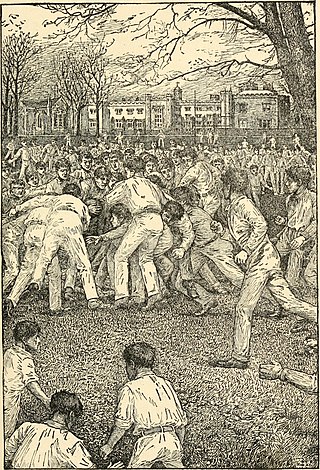
The school story is a fiction genre centring on older pre-adolescent and adolescent school life, at its most popular in the first half of the twentieth century. While examples do exist in other countries, it is most commonly set in English boarding schools and mostly written in girls' and boys' subgenres, reflecting the single-sex education typical until the 1950s. It focuses largely on friendship, honour and loyalty between pupils. Plots involving sports events, bullies, secrets, rivalry and bravery are often used to shape the school story.

Angela Brazil was one of the first British writers of "modern schoolgirls' stories", written from the characters' point of view and intended primarily as entertainment rather than moral instruction. In the first half of the 20th century she published nearly 50 books of girls' fiction, the vast majority being boarding school stories. She also published numerous short stories in magazines.
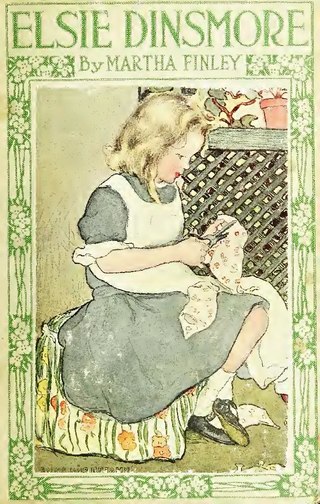
Elsie Dinsmore is a children's book series written by Martha Finley (1828–1909) between 1867 and 1905. Of Finley's two girls' fiction series, the "Mildred Keith" books were more realistic and autobiographical in nature, while the "Elsie Dinsmore" books, which were better sellers, were more idealistic in plot. A revised and adapted version of the Elsie books was published in 1999.

The Abbey Series of British novels by Elsie J. Oxenham comprises 38 titles which were published between 1914 and 1959. The first title, Girls of the Hamlet Club set the scene for the school aspects of the series, but it is the second title, The Abbey Girls, that introduces The Abbey – almost a character within the series in its own right – a romantic ruin that inspires love for it as a quiet, peaceful place, and creates the wish to behave in the public-spirited tradition of the early Cistercian monks. These qualities go some way towards explaining the popularity of the series.
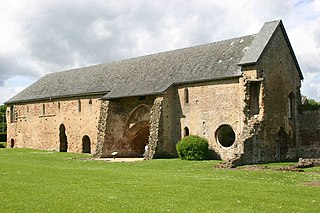
Cleeve Abbey is a medieval monastery located near the village of Washford, in Somerset, England. It is a Grade I listed building and has been scheduled as an ancient monument.
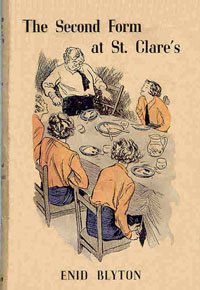
The Second Form at St. Clares is the fourth novel in the St. Clare's series of children's school stories by Enid Blyton. The series is about the boarding school adventures of twin girls Patricia and Isabel O'Sullivan. Their form mistress is now Miss Jenks and they no longer have to bear the severeness of the first form mistress, Miss Roberts – who is extremely sarcastic and firm but can be kind when she feels like to, a bit like Mam'zelle, the French teacher that used to teach and is still teaching the girls.
Dorita Fairlie Bruce was a Scottish children's author who wrote the popular Dimsie series of books published between 1921 and 1941. Her books were second in popularity only to Angela Brazil's during the 1920s and 1930s. The Dimsie books alone had sold half a million hardback copies by 1947.

Elsie Jeanette Dunkerley, was an English girls' story writer, who took the name Oxenham as her pseudonym when her first book, Goblin Island, was published in 1907. Her Abbey Series of 38 titles are her best-known and best-loved books. In her lifetime she had 87 titles published and another two have since been published by her niece, who discovered the manuscripts in the early 1990s. She is considered a major figure among girls' story writers of the first half of the twentieth century, being one of the 'Big Three' with Elinor Brent-Dyer and Dorita Fairlie Bruce. Angela Brazil is as well-known - perhaps more so - but did not write her books in series about the same group of characters or set in the same place or school, as did the Big Three.

Margaret Bayne Todd was a political and social campaigner born in Glasgow, but is usually more associated with Liverpool, settling there in the 1920s and becoming the first woman to achieve a degree in sociology. She married Tom Simey, a political scientist at Liverpool University; he was later awarded a life peerage by Harold Wilson, but she did not use the title "Lady Simey". They had one son.

Non-Connectors are titles by Elsie J. Oxenham that do not connect into her main Abbey Series.

Mary I of England has been depicted in popular culture a number of times.

"The Colorful Character" is a science fiction short story by American writer L. Sprague de Camp, part of his Viagens Interplanetarias series. It was first published in the magazine Thrilling Wonder Stories in the issue for December, 1949. It first appeared in book form in the collection Sprague de Camp's New Anthology of Science Fiction, published simultaneously in hardcover by Hamilton and in paperback by Panther Books in 1953.
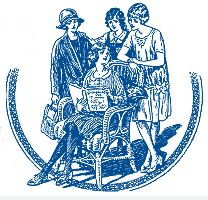
Girls Gone By Publishers is a publishing company run by Clarissa Cridland and Ann Mackie-Hunter and is based in Coleford, Somerset. They re-publish new editions of some of the most popular girls' fiction titles from the twentieth century.

Downton Abbey is a British historical drama television series set in the early 20th century, created and co-written by Julian Fellowes. It first aired in the United Kingdom on ITV on 26 September 2010 and in the United States on PBS, which supported its production as part of its Masterpiece Classic anthology, on 9 January 2011. The show ran for six series and fifty-two episodes, including five Christmas specials.
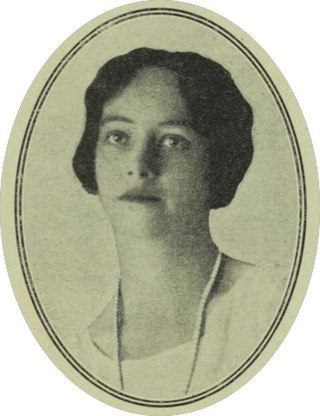
Margaret Horder was an Australian artist and children's book illustrator. She is best known for illustrating books by Joan Phipson, Patricia Wrightson and Nan Chauncy.

















